We will give you the key factors that allow you to compare and rate ceramic coated pans. If and which pan is right for you, you can find out by the criteria. Ceramic pans pros and cons are described here.
- material
- diameter
- Dimensions
- mass
- oven compatibility
- color
- Suitable induction
- Fat-free preparation
- Pouring rim and with lid
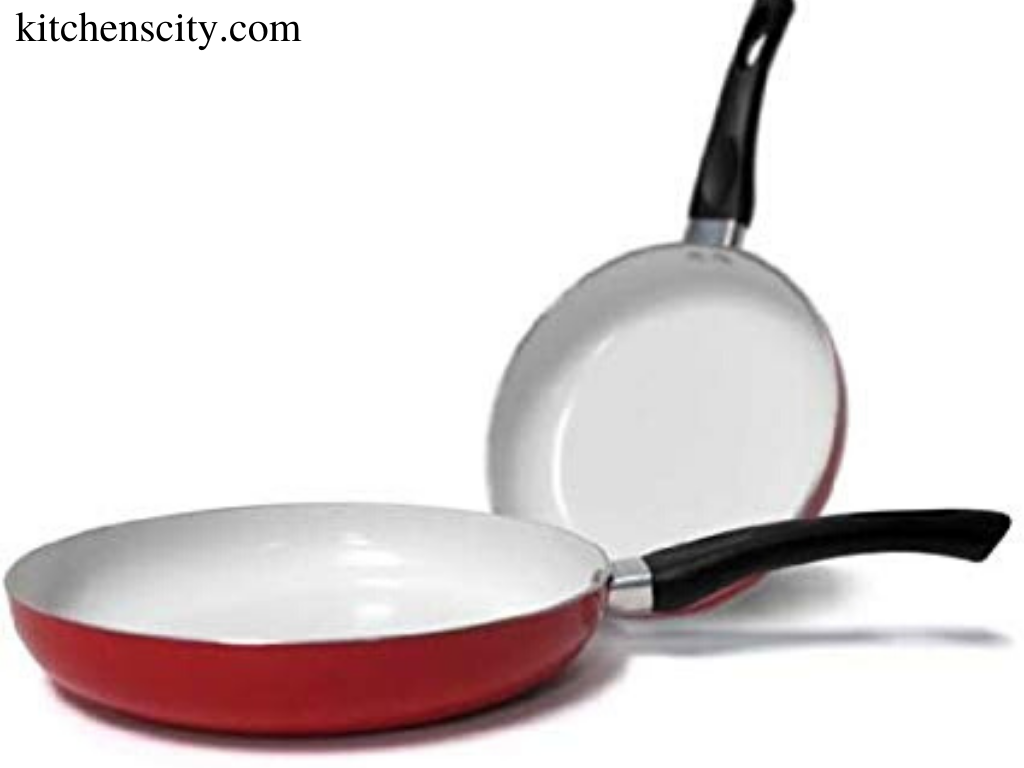
Ceramic Pans Pros And Cons and how you can classify them
In the following paragraphs, you can read in each case, what meaning the individual purchase criteria have and how you can classify them.
For ceramic coated pans, any material can be used. Among other things, the function of the material is to guide the energy (heat) into the ingredients. Aluminum and stainless steel are the most common and widely used materials for ceramic pans.
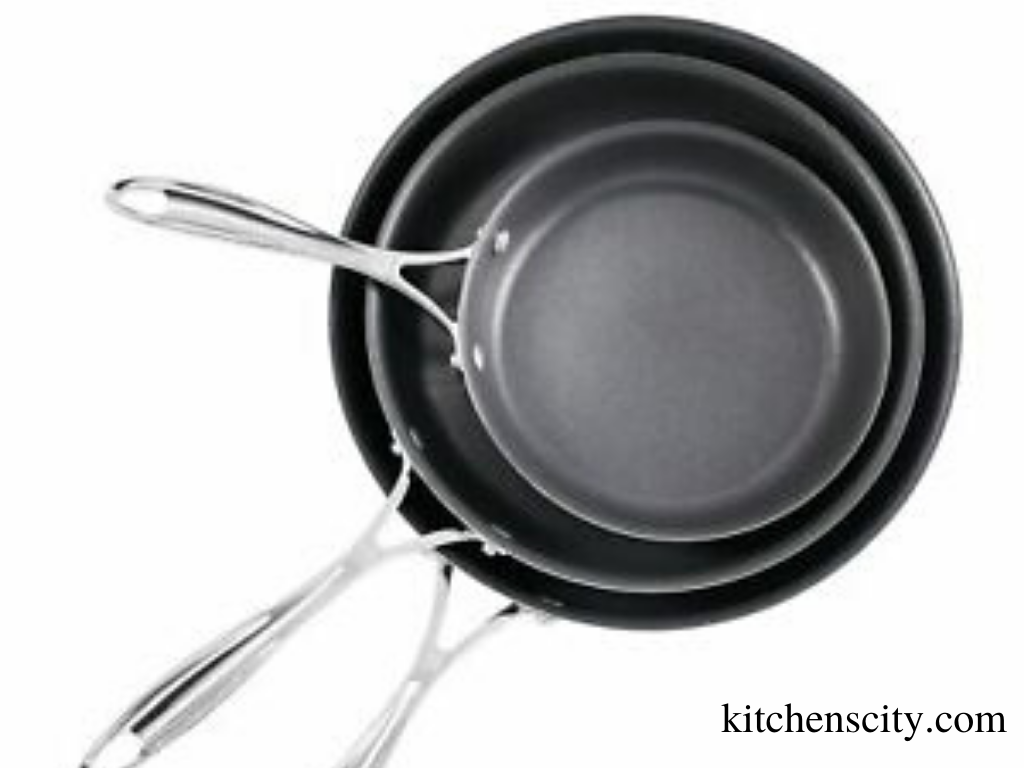
Cooking With Ceramic Pans
Pure aluminum pans are rarely available today. They are usually ceramic coated or have a PTFE coating. These aluminum pans are cheap, light in weight, and best conduct the heat.
Advantages
- Attractively priced
- Good thermal properties
Disadvantage
- reacts with the food, especially if they are acidic
- Low density, therefore poor heat capacity
- Deform the easiest
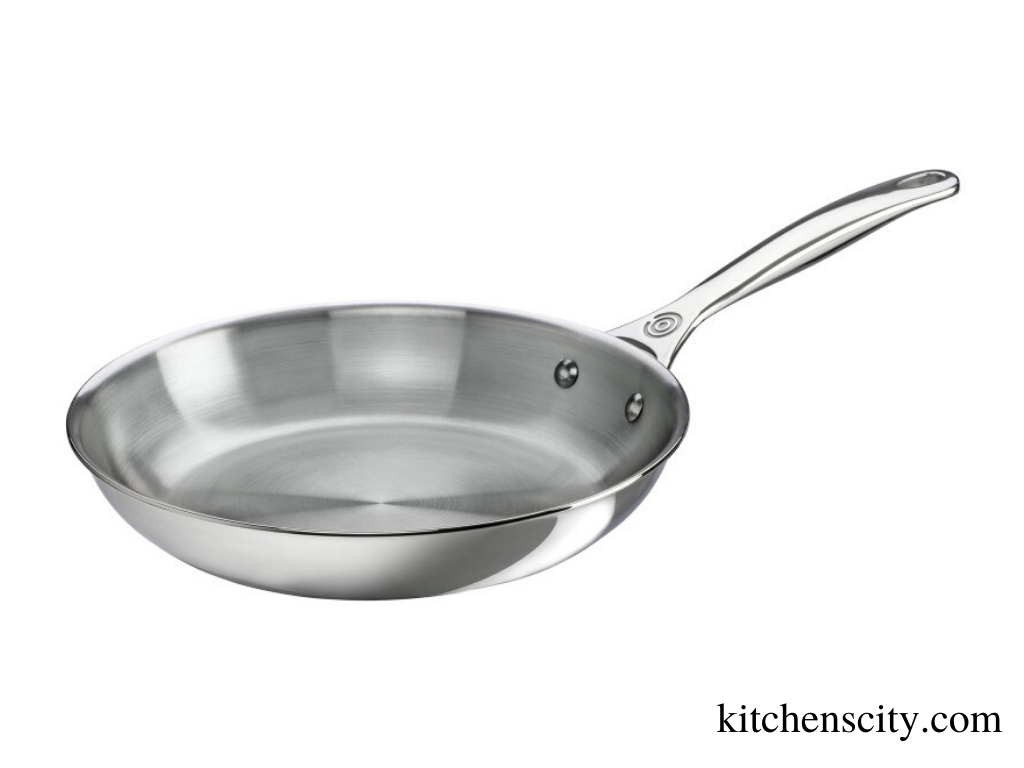
The unique thing about stainless steel is that it can not rust. Stainless steel is hard and easy to clean. It is steel to which nickel and chromium have been added. Also, aluminum or copper plates are often used in the interior of a stainless steel pan to improve the heat conduction.
Advantages
- stainless
- Easy to keep clean
- not reactivated with food
- Excellent thermal properties in combination with copper or aluminum core
Disadvantage
- Salt can attack stainless steel pans
- The poor anti-adhesive effect in case of the wrong operation
Reduced thermal conductivity causes the pan to take longer to respond to temperature changes and come to cooking temperature.
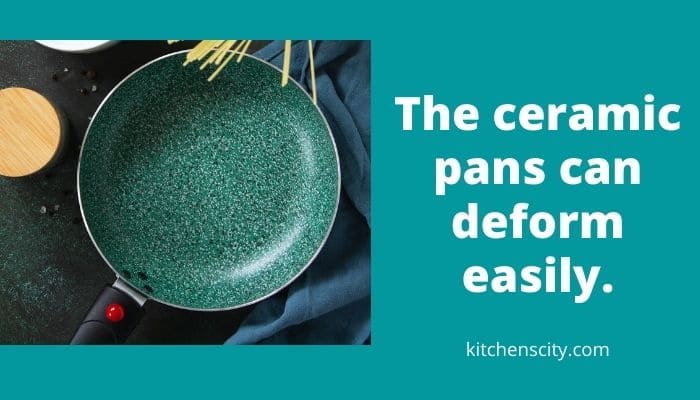
Are Ceramic Pans Good
Diameter
When choosing the diameter of your pan, you should pay attention to two points:
1. The diameter, ie, the width of the bottom of the pan, should have the same or the same diameter as the part of the hearth surface on which the pan is to be used. This is of enormous importance, in particular for electric and induction hobs, since the bottom of the pan is the part which is in direct contact with the heat source.
2. The diameter of the pan mirror indicates how much-fried food fits into your pan. The pan mirror is the other side of the pan floor, which is used as a roasting surface.
Depending on the shape of your pan, the pan level may be smaller than the pan diameter (see wok pan)
Dimensions
It depends on the dimensions of your pan on what and for whom it is cooked. The diameter of the pan bottom and the height of the pan together form the volume, ie, the capacity, of the pan. Depending on the purpose and number of people you should decide on a high or low edge.

High-margin ceramic jars, such as wok pans or stew pans, give you the ability to cook with liquids or to make sauces without pudding anything out of the pan. Low-edge ceramic pans are recommended for preparing food that immediately lands on the plate and is not liquid after preparation, such as pancakes or steaks.
Mass
The weight of your ceramic pan should not be too heavy or too light. If your pan weighs a little, it’s a sign of thin material. If your pan has a lightweight material, it tends to deform more quickly. This usually happens with very cheap pans.
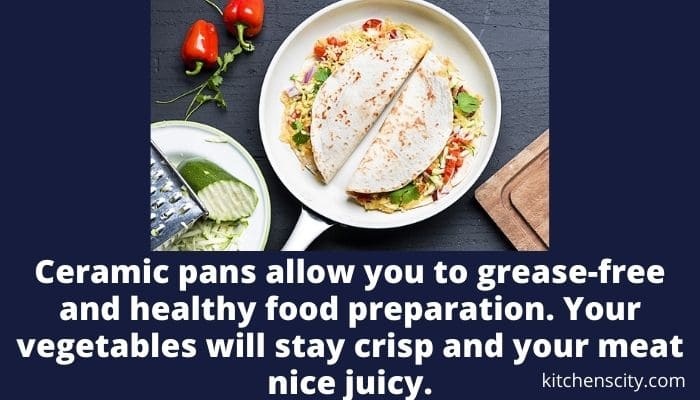
If your pan is too heavy, cooking with it becomes more complicated than you thought. If you want to pour something out of the pan, this can quickly become an arms training. Remember, the further you grab the panhandle, the harder the pan will look.
Here is a small recommendation:
- 24 cm: 800 g to 1.5 kg
- 28 cm: 1 kg to 1.8 kg
Oven Compatibility
A big plus are pans that are suitable for your oven. So you can also use the pan to warm up or to bake your food in the oven. Pay attention to the instructions from the manufacturer: The handle of the pan should be heat resistant or removable.
Especially with large pans, it is advantageous if the handles are removable. In this way, you have the opportunity to grab your pan without problems when to remove and to insert into the oven.
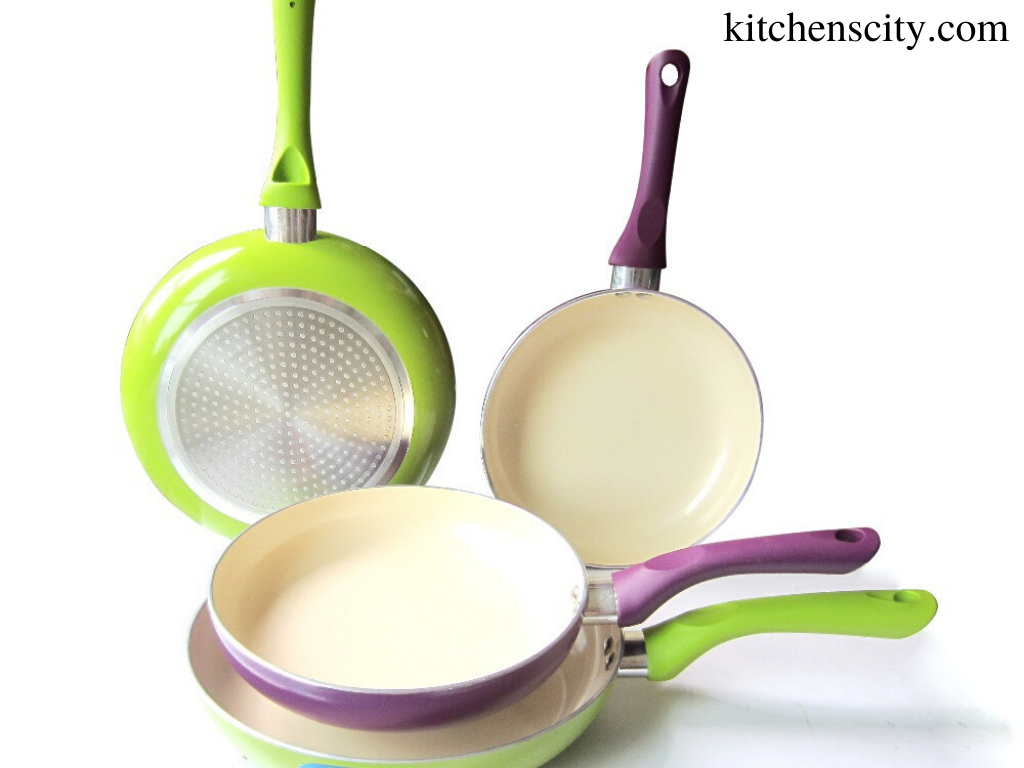
White Ceramic Pans
Pans with a ceramic coating are available in all colors. There is a suitable pan in the preferred color for everyone on the market. For the ceramic coating, you can choose between classic white and dark coat.
The white coating may cause discoloration after a while. Therefore, pay attention to the proper cleaning and care of your pan. With dark coats, you have the advantage that will not be noticed immediately.
Again, you should take care not to use metallic objects in the pan, so it does not come at all to scratches. Whether your pan is light or dark-coated does not affect the function of the non-stick coating.
Also, the pans of the ceramic pans are available in different colors. Whether colored or metallic is entirely up to you. You will also find out more in the section Guides.
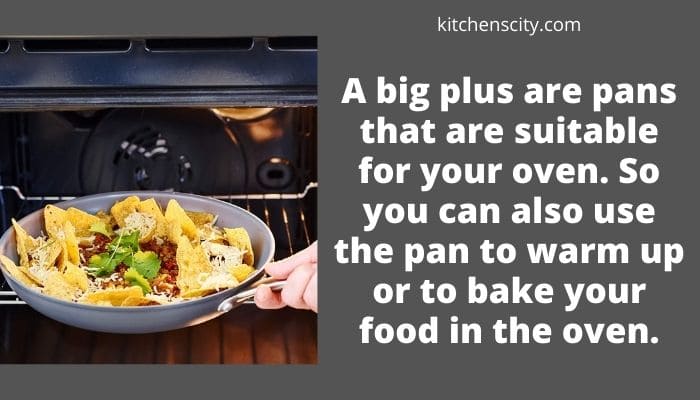
Suitable Induction
So that your pan can also work on an induction cooker, the bottom of your pan must be ferromagnetic. The characteristic ferromagnetism is generated by external magnetic fields so that the material becomes magnetic. Thus, an attractive force is created between the external magnetic field and the ferromagnetic material.
Pay attention to the manufacturer’s information. Induction cookers work as follows: When the pan reaches the ferromagnetic field of the induction cooker, it does not heat the hob itself, but the cookware.
This energy is converted into heat by the power is transmitted as an alternating electromagnetic field to the bottom of the ceramic pan. Under the cooking surface is the current-carrying coil. The magnetic field causes eddy currents, which heat the pan.
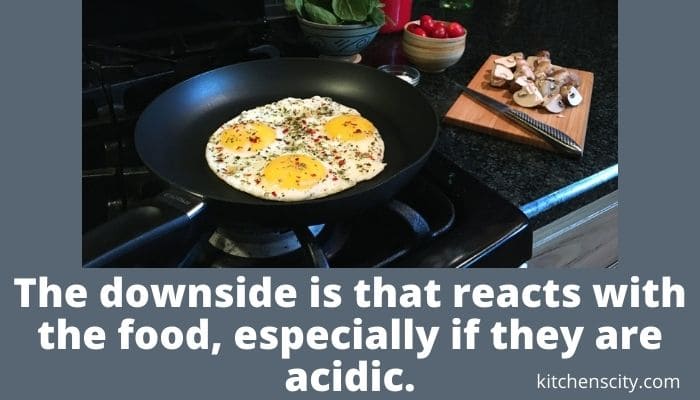
Fat-Free Preparation
You pay attention to your figure or try to eat healthily? Then ceramic pans are just the thing for you. They allow you to grease-free and healthy food preparation. Your vegetables will stay crisp and your meat nice juicy. In this way, the vitamins are not destroyed.
Our tip: prepare vegetables in the ceramic wok fat-free and enjoy with yogurt.
Thanks to the non-stick coating do not burn when simmering the food. If you still do not want to give up oil, then please make sure that you use oils with a high smoke point. Low-smoke oils, such as olive oil, are unsuitable for searing.
Best of all, after the pan has been heated up for about 3 minutes, add the oil to the pan just before adding the food. Caution: Acrolein is toxic and carcinogenic and is caused by overheating of fats. It is also irritating to the mucous membranes.
Is Ceramic Coating Safe
The Lid And Pouring Rim

A pouring rim allows you a drip-free pouring. Especially with stew and wok pans, a pouring edge is of advantage, as you can pour out sauces or soups, ie, liquids in general without dripping. The fluids thus flow controllably where they are desired.
A lid is also an important aspect to watch out. Not all pans include a cover on delivery. But a lid has more than one function: it determines the nutritional content of the food, the cooking time and the energy consumption.
Make sure that the lid is placed correctly on the edge of the pan. Otherwise, water vapor and nutrients will be lost, and your food will not cook properly. A glass lid has the advantage that you can control your food without interrupting the cooking process.
